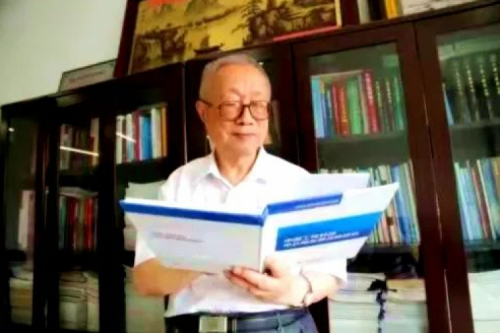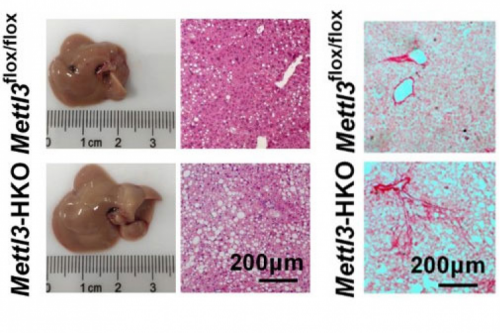Reported by: Wang Ji
Translated by: Sun Jianyao
Edited by: D. Parker
Date: 2017-10-13
The research group of Prof. Hu Ying, a professor from HIT’s School of Life Science and Technology, has made significant progress in the study on the molecular mechanisms of oxidative stress in tumor cells. On 12th October, the study was published as an article in the top journal of oncology——Cancer Cell ( Subordinate serial of Cell, with the Influencing Factor of 27.407). The article is entitled iASPP Is an Antioxidative Factor and Drives Cancer Growth and Drug Resistance by Competing with Nrf2 for Keap1 Binding. The corresponding author of the article is Hu Ying and the first authors are doctoral students Ge Wenjie and Zhao Kunming, members of the team. Doctoral student Wang Xingwen, and master student Li Huayi completed part of the experimental content of the project. HIT is the first corresponding unit.
Human cells are unavoidably exposed to reactive oxygen species (ROS) from the outside (eg, UV) and cellular aerobic metabolism. A small amount of ROS is an important signaling molecule that regulates normal physiological activity of cells. High levels of ROS will act on the biomacromolecule, including DNA, leading to damage and destroying its function. This becomes an important driving force for tumorigenesis. Studies have shown that the level of ROS in tumors is generally higher than the normal control of the same tissue source. If ROS continues to accumulate and exceed the threshold of death, it will cause cell apoptosis. Radiation therapy and many chemotherapy drugs can promote the over-accumulation of ROS allowing it to play its role in killing tumor cells. Resistance occurs once tumor cells inhibit the over-accumulation mechanism of ROS. It can be seen that the intracellular ROS level plays a decisive role in the fate of the cells. This makes it clear that the molecular regulation mechanism is of great significance in revealing the mechanism of tumors and of tumor resistance. This is a hot issue in the field of biological research.
Prof. Hu Ying’s team discovered that iASPP (Inhibitor of Apoptosis Stimulating Protein of P53) protein plays an important role in inhibiting ROS. Studies have shown that the use of multiple molecular biological means to increase or inhibit the expression of intracellular iASPP is always associated with changes in ROS levels, which is prevalent in a variety of tumor cells. It is noteworthy that, although the current studies of iASPP function mainly focus on its regulation on nuclear transcription factor p53, this study shows that iASPP is mainly in the cytoplasm rather than the nucleus in the p53-dependent manner to regulate ROS.
After a great deal of exploratory work, the team discovered that the function of iASPP inhibiting ROS mainly relies on its regulation on antioxidant core factor Nrf2. The expression of iASPP and Nrf2 in renal tissue specimens showed a positive correlation. Further research on the model of mouse lotus tumor verified that the expression of iASPP was inhibited and correspondingly, the expression and transcriptional activity of Nrf2 were also decreased. This suggests that iASPP may be an important mechanism for the regulation of tumor cells on Nrf2 antioxidant. The team further explored the molecular mechanism of iRPP’s regulation on Nrf2 and found that iASPP enhanced the stability of Nrf2 protein by competitively binding its N-terminal DLT amino acid sequence (motif) and Nrf2 to Keap1. This is the main inhibitory factor of Nrf2 to promote the protein stability, nuclear translocation of Nrf2 and the transcriptional activation of Nrf2 on its downstream antioxidant target genes (such as NQO1, HMOX1, FTH1), so as to play a role in inhibiting ROS. This is a new molecular mechanism because DLG at Nrf2 is the only motif known to bind to DGR located in Keap1. This study suggests that DLT can competitively bind with DGR, which provides new clues for the discovery of the regulatory factor of Keap1/Nrf2 and the mechanism and the antioxidant molecular mechanism.
Taking kidney cancer as a model, this team further studied the significance of iASPP/Nrf2/ROS in tumor therapy. ROS has an important regulatory role on the sensitivity of chemotherapy. Kidney cancer is different from other tumors, because of its natural drug resistance to most chemotherapeutics. This is one of the important factors leading to poor prognosis of patients with kidney cancer. Thus, the resistance mechanism of kidney cancer is an important issue in the field of cancer. However, the team's in vitro and mouse tumor-bearing experiments showed that the iASPP/Nrf2/ROS pathway is a key factor in the tolerance of 5-FU to kidney cancer, which is widely used in clinical chemotherapy. This achievement offers important ideas for the development of new strategies for the clinical treatment of high drug-resistant tumors.
Prof. Hu Ying received her Ph.D. in oncology from the University College London in 2009. She worked at the Ludwig Cancer Institute in Oxford. In 2012, she was introduced to HIT as an outstanding overseas talent. After returning home, she has presided over the completion of a number of national, provincial and ministerial level research projects and published several research papers in the Proceedings of the National Academy of Sciences of the United States of America(PNAS) International Journal of Cancer, Cell Death and Disease and other high-level SCI magazine.
Link: http://www.cell.com/cancer-cell/fulltext/S1535-6108(17)30412-9





